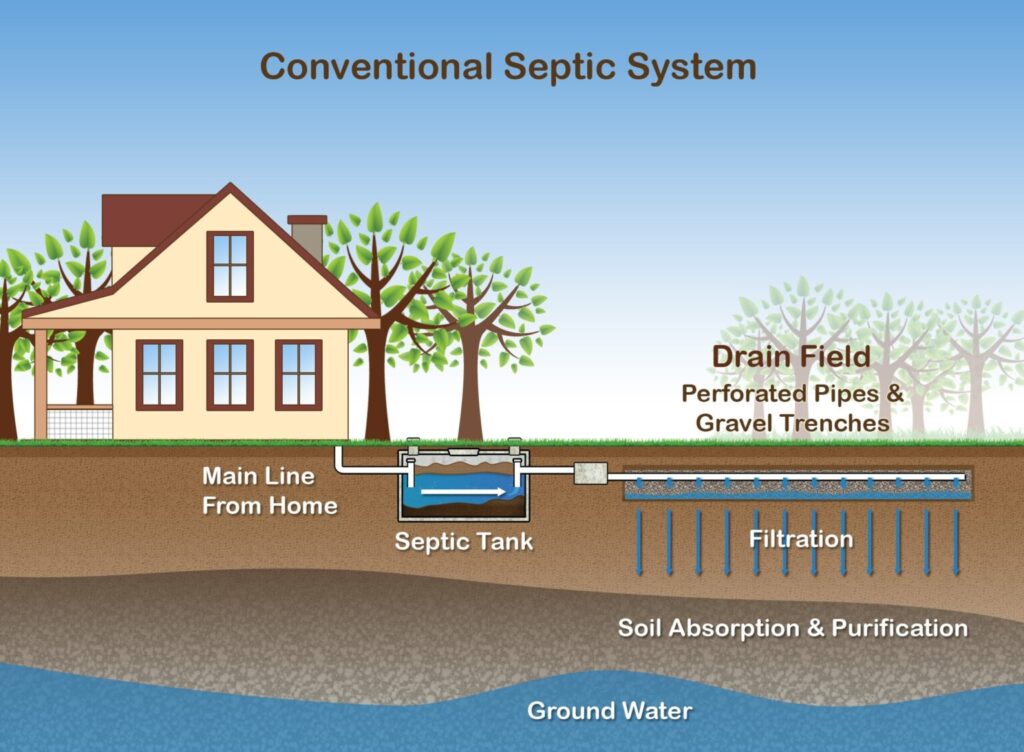Summer is upon us: the trees and flowers are blooming, and many people are excited to get in the yard or garden. This time of year sees an increase in minor and major construction around homes and businesses which is great for the aesthetics of our homes and communities, but we could have short-run or long-run issues due to our construction. Many people do not realize how sensitive we need to be around our underground wastewater treatment systems. Our septic systems are designed to operate with minimal oversight and maintenance as long as the system is not disrupted.

Here are a few items to consider before performing your annual yard or garden work.
- Make sure to locate your septic tank and drain field.
- The tank should be in very close proximity to the home or business and the drain field should extend out and away from the home or business in the same general direction as the tank is away from the structure.
- Your drain field is the perforated pipes laid in trenches filled with gravel or sand. The effluent from the septic tank flows through these pipes and slowly seeps into the surrounding soil. This will make certain that you do not cut or dig into the tank or drain field.
- It is best to stake off a buffer area around each to make sure nothing is planted within the buffer zone.
- Make sure to not drive over, park on top of, or cover up any part of the drain field.
- The tank and drain field need to be in good, permeable soil so that treated wastewater can flow into the drain field and saturate into the soil.
- Driving and parking over the top of a tank may cause the tank to break or cave in. This can greatly disrupt the inflow and effluent flow.
- Driving and parking over the top of the drain field can cause the soil to become compacted which will force water to flow over the soil instead of permeating the soil. It may also cause a drain field to be crushed which will cause a backup with the system.
- Make sure to not plant any trees and/or bushes adjacent to the tank or drain field.
- The roots from trees and bushes will seek the moisture from the tank and drain field. The roots can ultimately clog the drain field which will cause a backup with the system.
By taking into account these measures, one can ensure that the lifecycle of their septic systems will not be interrupted or reduced. Septic systems are an effective wastewater treatment method as long as owners stay diligent in their general knowledge and maintenance of these systems. So get out there this summer, put some flowers and trees in the ground, and make your place beautiful while always being conscious of your wastewater treatment system.

